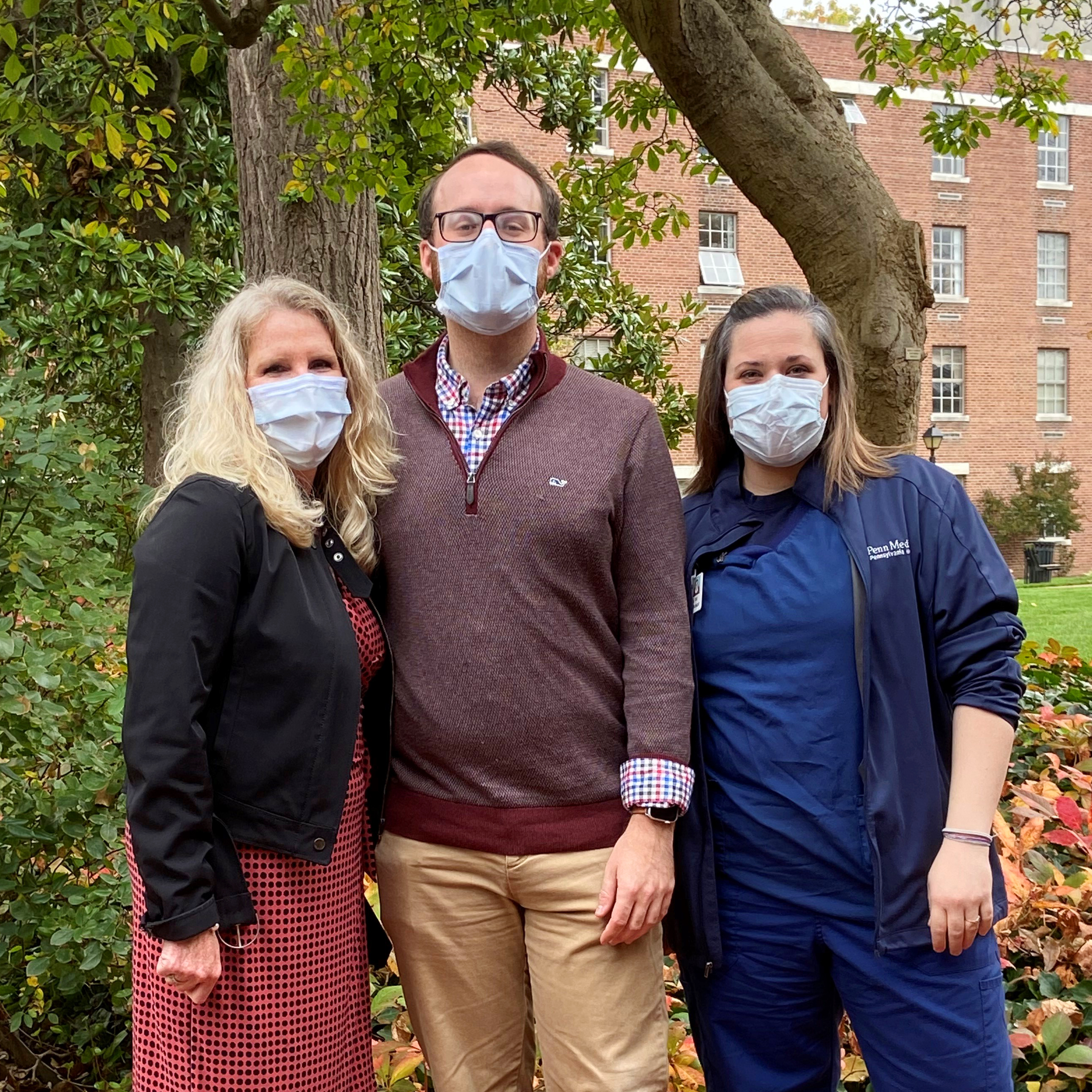 (From left) Elizabeth Craig, Bobby Goodacre, and Kate DiMedio
(From left) Elizabeth Craig, Bobby Goodacre, and Kate DiMedio
One hundred feet is a short distance, but a lot can happen in those steps: The Philadelphia Eagles can get a third of the way to the end zone, or you can take the final strides needed to achieve your daily step goal, for example. At Pennsylvania Hospital, senior improvement advisors Bobby Goodacre, MBA, and Kate DiMedio, BSN, recognized that the 100-foot distance from the hospital’s main entrance at 8th Street — through which almost all patients, visitors, vendors, etc, normally pass — to the Preston elevator, which leads to many patient floors, was of significant importance when developing the hospital’s plan to return to full clinical care capacity after the spring surge of COVID-19.
Through their First 100 Feet project, Goodacre, DiMedio, and a collaborative team of Facilities, Security, Patient & Guest Relations, and Radiology staff worked together to identify process improvements that could create smooth traffic flow and reduce risks of exposure as more patients and limited visitors returned after the initial COVID-19 surge.
“When PAH began scheduling non-emergency procedures again, Kate and I walked through the hospital and identified areas of opportunity,” Goodacre said. “By examining the different metrics that we’ve been monitoring throughout the pandemic — available PPE, patient volume, the number of staff needed in certain areas — we were able to get a sense of who was coming in at any given time, what issues could come up, and what solutions we could prioritize to foster a safe resurgence.”
In addition to the recommendations borne from their own findings — such as increasing the number of staff members taking temperatures, asking screening questions, and transporting patients — the team was also inspired by the approaches rolled out by local businesses, and particularly the clear signage, social distancing measures, and plexiglass barriers employed by Whole Foods. “Nearly every patient comes through this corridor, and it’s the first experience they have. Just because there are several steps they need to take within the first 100 feet doesn’t mean it needs to be inconvenient; patient safety and patient experience are one and the same,” Goodacre said.
For DiMedio, the enthusiastic reception of the First 100 Feet project has been wonderful, if unexpected. Colleagues across the Health System have expressed interest in learning more about PAH’s approach, and the team has been happy to oblige. “One of the most important parts of this work is that it can be easily replicated — in health care and outside of it. This is something that we’ve been able to do into other areas, like Hall-Mercer Community Mental Health Center,” DiMedio said. Last month, she co-hosted an ECRI webinar with Goodacre and PAH’s chief nursing officer Elizabeth Craig, DNP, RN, explaining how other hospitals can also translate approaches from “big businesses to the bedside” in an effort to improve patient flow and safety. “It’s really cool that sharing our resurgence [toward safe care amid COVID-19] work could set a standard for hospitals across the country.”